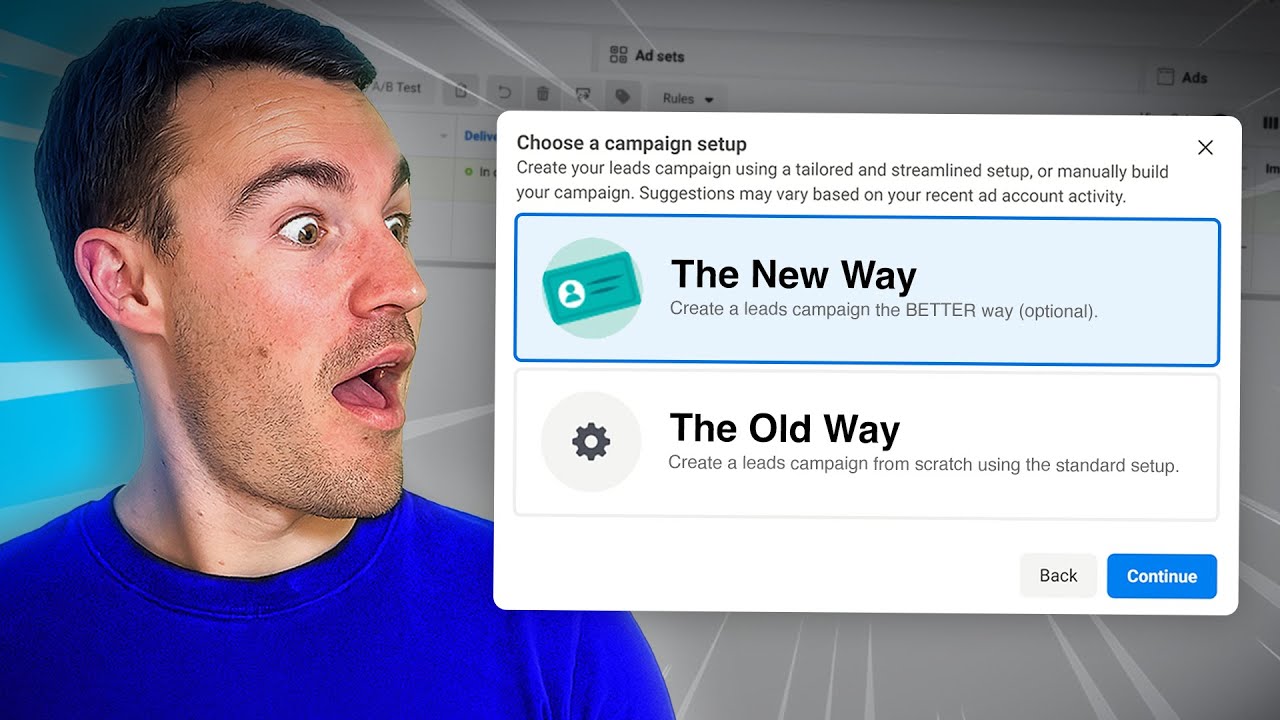In the cutthroat world of digital marketing, successful campaigns are built on the foundation of effective advertising strategies. And when it comes to reaching a wide and diverse audience, there’s one platform that reigns supreme: Facebook.
With its staggering user base and plethora of tools at your disposal, runningFacebook ads has become an indispensable weapon in every marketer’s arsenal. From targeting specific demographics to analyzing ad performance, this social media giant offers a multitude of features designed to boost conversions and inform your overall marketing strategy.
So if you’re ready to take your advertising game to new heights, fasten your seatbelt and prepare to dive into the thrilling world of Facebookads!
Table of Contents
- running facebook ads
- Facebook’s Large And Diverse Audience For Marketers
- Targeting Specific Audiences On Facebook
- Tracking And Measuring Ad Performance With Facebook’s Built-In Analytics
- Overviewing And Managing Ad Campaigns With Facebook Ads Manager
- Creation And Management Of Campaigns, Ad Sets, And Ads
- Monitoring And Optimizing Ad Performance With Facebook Ads Manager
- Boosting Well-Performing Posts With Auto-Generated Recommendations
- Choosing Objectives For Facebook Ad Campaigns
- Customizing Target Audience With Facebook’s Targeting Criteria
- Budget Options And Cost Of Advertising On Facebook
running facebookads
Running Facebook ads offers marketers a powerful platform to reach and engage with a large and diverse audience. With billions of monthly and daily users, Facebook allows marketers to target specific audiences based on parameters such as age, interests, and behaviors.
The platform provides built-in ad analytics to track performance in real-time, and the sophisticated Facebook Ads Manager dashboard allows marketers to create and manage ad campaigns. Various features and metrics within Ads Manager enable marketers to optimize ad performance, with options such as enabling auto-generated recommendations to boost well-performing posts.
Marketers have different objectives to choose from when creating a campaign, and they can customize their target audience using Facebook’s targeting criteria. Budget options, including daily and lifetime budgets, provide flexibility for spending.
The cost of advertising on Facebook varies depending on the bidding model and strategy used, with options such as spend-based, goal-based, and manual bidding. Advanced options for scheduling, optimization, and pricing allow for fine-tuning ad campaigns.
Ad formats range from single-image to carousel, with specific design criteria for each. Monitoring ad performance metrics like results, reach, engagement, and website metrics is essential for measuring ROI and informing marketing strategy.
To improve ad performance, marketers can utilize social proof and clear call-to-actions (CTAs), as well as conduct A/B testing to refine different elements of ads.Key Points:
- Facebook ads offer marketers a powerful platform to reach and engage with a large and diverse audience.
- Marketers can target specific audiences based on parameters such as age, interests, and behaviors.
- The platform provides built-in ad analytics to track performance in real-time.
- Marketers can create and manage ad campaigns using the sophisticated Facebook Ads Manager dashboard.
- Marketers have different objectives to choose from when creating a campaign and can customize their target audience.
- Ad formats range from single-image to carousel, with specific design criteria for each.
Sources
https://www.facebook.com/business/goals/run-facebook-ad-campaigns
https://blog.hubspot.com/marketing/facebook-paid-ad-checklist
https://www.facebook.com/business/ads
https://www.facebook.com/business/tools/ads-manager/get-started
Check this out:
💡 Pro Tips:
6. Utilize Facebook Pixel to track conversions and optimize ad targeting based on user behavior on your website.
7. Experiment with different ad formats, such as video ads or collection ads, to engage your audience and stand out from competitors.
8. Make use of custom audiences and lookalike audiences to reach people who are similar to your existing customers or website visitors.
9. Take advantage of Facebook’s retargeting capabilities by showing specific ads to people who have already interacted with your brand.
10. Regularly monitor and optimize your ad campaigns by adjusting targeting, bidding, and creative elements based on the data and insights provided by Facebook Ads Manager.
Facebook’s Large And Diverse Audience For Marketers
Facebook offers a vast and diverse audience for marketers, with billions of monthly and daily active users. This large user base provides an incredible opportunity for businesses to reach a wide range of potential customers.
Whether you are looking to target a specific demographic or cater to a broader audience, Facebook provides the platform to reach your desired audience.
Targeting Specific Audiences On Facebook
One of the key advantages of running Facebook ads is the ability to target specific audiences. Marketers can set parameters such as age, interests, and behaviors to ensure their ads are seen by the most relevant people.
This targeted approach allows businesses to maximize their ad spend by reaching the right people who are most likely to be interested in their products or services.
By selecting relevant interests, businesses can reach individuals who have shown an affinity for similar products or topics. This ensures that ads are displayed to an audience that is more likely to be interested in what the business has to offer.
For example, businesses can target individuals who have shown an interest in purchasing certain products or who have engaged with similar brands in the past.
Tracking And Measuring Ad Performance With Facebook’s Built-In Analytics
One of the most crucial aspects of running Facebook ads is tracking and measuring their performance. Facebook provides built-in ad analytics that enable marketers to track and measure their ad performance in real-time.
This data allows businesses to gain insights into the effectiveness of their ads and make informed decisions to optimize their marketing strategies.
Facebook’s ad analytics provide a range of metrics to monitor ad performance. Marketers can track metrics such as reach, engagement, and website metrics to gauge the success of their campaigns.
This data can be used to identify which ads are performing at their best and which may need adjustments.
Overviewing And Managing Ad Campaigns With Facebook Ads Manager
To effectively run Facebook ads, marketers can utilize Facebook Ads Manager, a sophisticated dashboard that allows them to oversee and manage all aspects of their ad campaigns. With Ads Manager, businesses have full control over their ad campaigns, allowing them to make real-time adjustments to improve performance and achieve their marketing goals.
Ads Manager provides a comprehensive view of all active campaigns, ad sets, and ads, making it easy for marketers to navigate and manage their campaigns. Marketers can view key performance metrics, track spending, and make necessary optimizations all from one centralized platform.
Creation And Management Of Campaigns, Ad Sets, And Ads
Facebook Ads Manager simplifies the creation and management of ad campaigns. Marketers can create campaigns, ad sets, and ads directly within the Ads Manager platform, eliminating the need for external tools or complex processes.
Creating a campaign involves defining the campaign’s objective, such as brand awareness, website traffic, or engagement. Different objectives serve different purposes, and marketers can choose the one that aligns with their specific marketing goals.
By setting clear objectives, businesses can effectively measure the success of their campaigns and make data-driven decisions.
Within each campaign, marketers can create specific ad sets targeting different audiences. This allows businesses to tailor their messaging and creative to different segments of their target market.
Within each ad set, businesses can create various ads, utilizing different formats and designs to attract and engage their audience.
Monitoring And Optimizing Ad Performance With Facebook Ads Manager
Facebook Ads Manager not only allows businesses to create and manage their ads but also provides a range of features and metrics to monitor and optimize ad performance. Marketers can review key performance indicators, such as reach, engagement, and conversions, to assess the effectiveness of their campaigns.
To improve ad performance, marketers can enable auto-generated recommendations provided by Facebook. These recommendations are based on machine learning algorithms that analyze ad performance data and suggest optimizations to boost well-performing posts.
By implementing these recommendations, businesses can enhance their ad campaigns and maximize their return on investment.
Additionally, marketers can leverage advanced options offered by Facebook Ads Manager to customize scheduling, optimization, and pricing of their ads. This flexibility allows businesses to fine-tune their campaigns to align with their specific goals and target audience.
Boosting Well-Performing Posts With Auto-Generated Recommendations
Facebook’s auto-generated recommendations feature is a valuable tool for marketers to improve their ad performance. These recommendations are based on the analysis of ad performance data and are designed to boost posts that are already performing well.
By implementing these recommendations, businesses can enhance the reach and engagement of their ads, ultimately driving more conversions. It is essential for marketers to regularly check and implement these recommendations to ensure maximum results from their ad campaigns.
Updated for 2025’s advertising best practices.
Choosing Objectives For Facebook Ad Campaigns
When creating a Facebook ad campaign, marketers have the option to choose from various objectives. These objectives serve as the guiding purpose for the campaign and determine the metrics that will be tracked.
Marketers can track the number of link clicks and the overall traffic generated through their Facebook ads.
Customizing Target Audience With Facebook’s Targeting Criteria
Facebook’s targeting criteria offers marketers the ability to customize their target audience based on specific parameters. This allows businesses to ensure their ads are shown to individuals who are most likely to be interested in their products or services.
By customizing the target audience, businesses can refine their reach and avoid spending advertising budget on audiences that are less likely to convert. The targeting criteria provided by Facebook include parameters such as age, gender, location, interests, and behaviors.
Marketers can leverage these criteria to create highly targeted campaigns that maximize their chances of success.
Budget Options And Cost Of Advertising On Facebook
When running Facebook ads, marketers have several budget options to choose from. These options include daily budget and lifetime budget, each with its own advantages and considerations.
Marketers can allocate the budget to different periods or segments of the campaign as needed, providing more flexibility in spending.
The cost of advertising on Facebook can vary depending on several factors, including the bidding model and strategy used. Facebook offers different bidding types, such as spend-based, goal-based, and manual bidding.
Each type has its own pricing structure and considerations, allowing businesses to choose the most suitable option based on their budget and objectives.
In conclusion, running Facebook ads offers marketers a powerful platform to reach a large and diverse audience. By leveraging Facebook’s targeting capabilities, ad analytics, and management tools, businesses can effectively create, track, and optimize their ad campaigns.
Customizing the target audience, selecting appropriate objectives, and properly budgeting are essential steps to maximize the effectiveness of Facebook advertising and boost business growth.
Advertising Platform for Marketers • Performance Marketing Tips • Buy Traffic • Self-Serve DSP Platform • Programmatic Advertising












